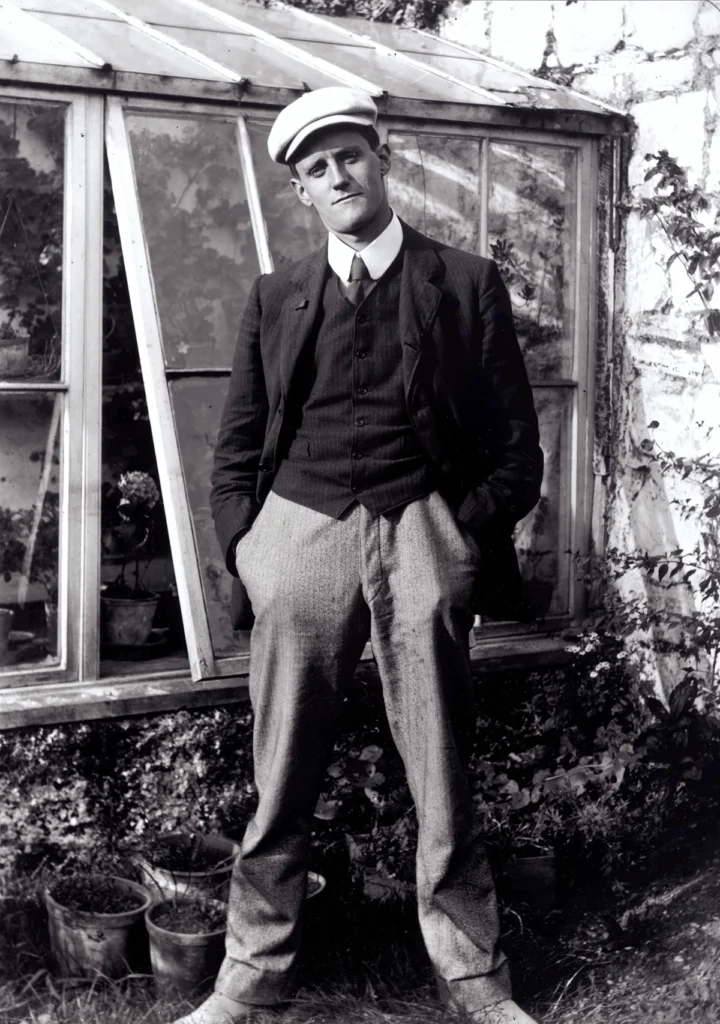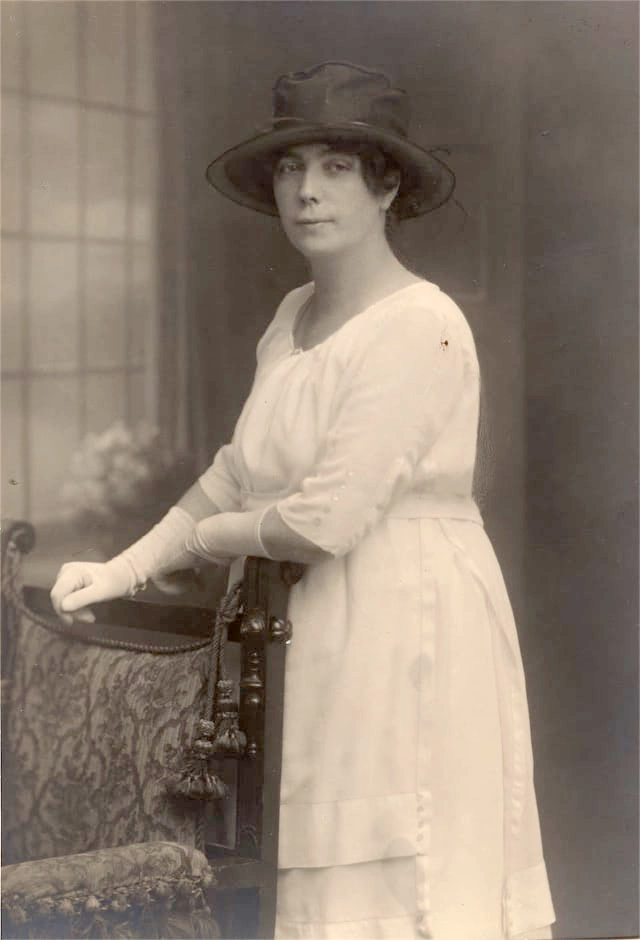Joyce as a pupil at Clongowes Wood College in Dublin. He was the youngest pupil of the college. The Jesuit sitting behind Joyce is Father William Power. He was to appear in A Portrait as Fr. Arnall, who taught Stephen both Latin and mathematics
> courtesy Clongowes Wood College Archive, Dublin
1882
1888
A portrait of the artist as a child
Above: Joyce as a pupil at Clongowes Wood College in Dublin. He was the youngest pupil of the college. The Jesuit sitting behind Joyce is Father William Power. He was to appear in A Portrait as Fr. Arnall, who taught Stephen both Latin and mathematics
> courtesy Clongowes Wood College Archive, Dublin
Baby Tuckoo
Postcard
“Once upon a time and a very good time it was there was a moocow coming (...) OPEN
1889
1892
Ad maiorem Dei Gloriam
Joyce e i gesuiti
Il padre iscrive il piccolo James al prestigioso Clongowes Wood College, gestito da gesuiti, deciso a dare al suo primogenito la migliore educazione possibile. Pure i successivi istituti che Joyce frequenta, Belvedere College e University College Dublin, sono retti da gesuiti che, consapevolmente, stanno formando la nuova classe dirigente cattolica d’Irlanda. Anche quando si allontanerà dalla religione e svilupperà un pensiero critico verso il clero, Joyce manterrà un’alta opinione dell’educazione ricevuta e proverà una fascinazione profonda per i cerimoniali ecclesiastici, la musica sacra, la liturgia.
John Stanislaus Joyce
Postcard
In A Portrait of the Artist as a Young Man and in Ulysses, Joyce created Stephen’s (...) OPEN

Below: The Martello Tower of Sandycove in an early 20th century photo. In this building, in which the opening chapter of Ulysses takes place, Joyce lived for a very short period with Oliver St John Gogarty, the inspiration for Buck Mulligan, “stately and plump”, in the incipit of the text > coll. National Library of Ireland, Dublin.
1893
1903
«Non serviam»
At the end of his school career (he graduated with an underwhelming pass in October 1902), Joyce underwent a difficult spell due to his precarious family and economic circumstances and to a sense of enstrangement he felt in Ireland. He failed to find appreciable sources of inspiration in contemporary Irish literature, whose specific forms of nationalism he challenged and critiqued.
He therefore developed the idea of leaving Dublin. In 1903 he was in Paris, in theory to continue studying medicine. He soon gave up medical studies and started making some money writing reviews for the “Daily Express”. He ate very little, read an awful lot, and met up with other expatriates, uprooted artists and intellectuals, including the triestino Theodor Däubler, who threatened to challenge him to a duel.
Letter from Stanislaus Joyce to Italo Svevo
Postcard
Letter from Stanislaus Joyce to Italo Svevo, Trieste, 18th January 1927 “Dear Mr Schmitz, […] I (...) OPEN
1903
1904
Nora
The Parisian stay came to an abrupt end on the evening of 10th April 1903, when Joyce found a telegram from his father waiting for him in his room, which read “MOTHER DYING COME HOME FATHER”. However, his stay in Dublin proved increasingly difficult. When he met the young hotel maid Nora Barnacle and fell in love with her, he decided to involve her in a new, more radical escape project. On 8th October 1904 the de facto couple left Dublin. Joyce never returned, except for short stays, but was to write about it for the rest of his life.
Postcard from Eileen Joyce
Postcard
Postcard from Eileen Joyce to Livia Veneziani Schmitz, Dublin, 7th January 1956. The postcard bears witness (...) OPEN
- Display Case






